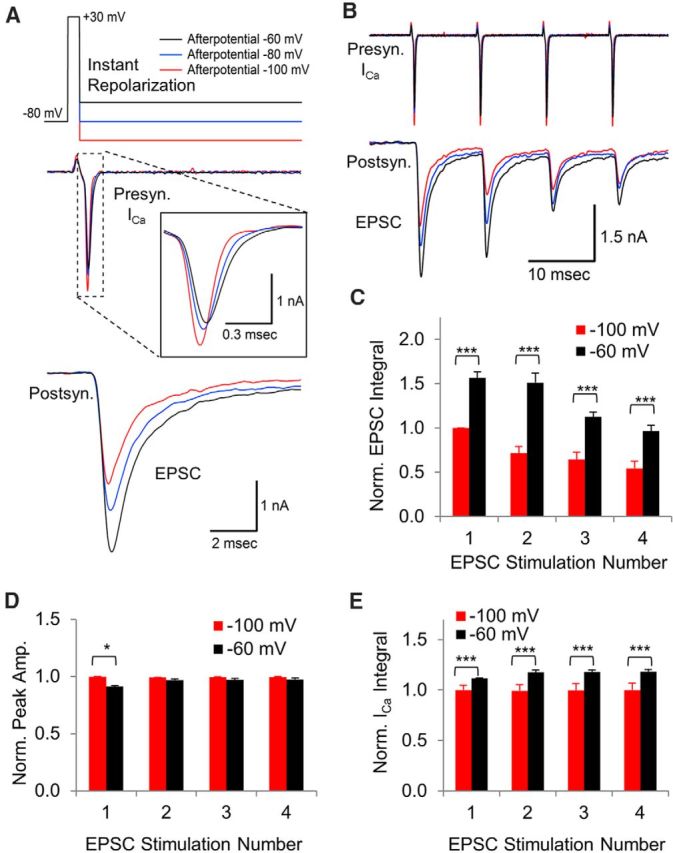Figure 1.

Afterpotentials after an instant voltage jump affect the presynaptic calcium current and the postsynaptic response. A, In simultaneous presynaptic and postsynaptic recordings, a 0.5 ms voltage jump was used to activate presynaptic voltage-gated calcium channels. After the voltage jump, the membrane potential was returned to −60 mV, −80 mV, or −100 mV to determine the response to an ADP (black), the normal response (blue), or an AHP (red), respectively. The center trace shows an overlay of the presynaptic calcium current. The bottom trace shows the simultaneously recorded excitatory postsynaptic current (EPSC). B, Presynaptic calcium channel response to a train of 0.5 ms voltage jumps at 100 Hz with simultaneously measured postsynaptic responses. C, The area of each postsynaptic response was measured to determine how synaptic transmission is affected by presynaptic afterpotentials that follow voltage jumps. EPSC integral is expressed as mean, with error bars indicating the SEM in response to a −100 mV afterpotential (red) or a −60 mV afterpotential (black). The postsynaptic response to presynaptic voltage jump afterpotentials of −100 mV and −60 mV showed a highly significant difference at each stimulation (***p < 0.005, t test, n = 5 paired presynaptic and postsynaptic recordings). D, Normalized peak amplitude of the presynaptic calcium current with SEM error bars. Responses are normalized to the amplitude of the first response to a stimulus train with −100 mV AHPs (*p < 0.05, t test, n = 5 paired presynaptic and postsynaptic recordings). E, Normalized average area of the presynaptic calcium currents with error bars indicating SEM. Responses are normalized to the first response to the voltage jump with a −100 mV afterpotential. The responses to an afterpotential at −100 mV versus −60 mV showed a highly significant difference at each stimulation (***p < 0.005, t test, n = 5 paired presynaptic and postsynaptic recordings).
